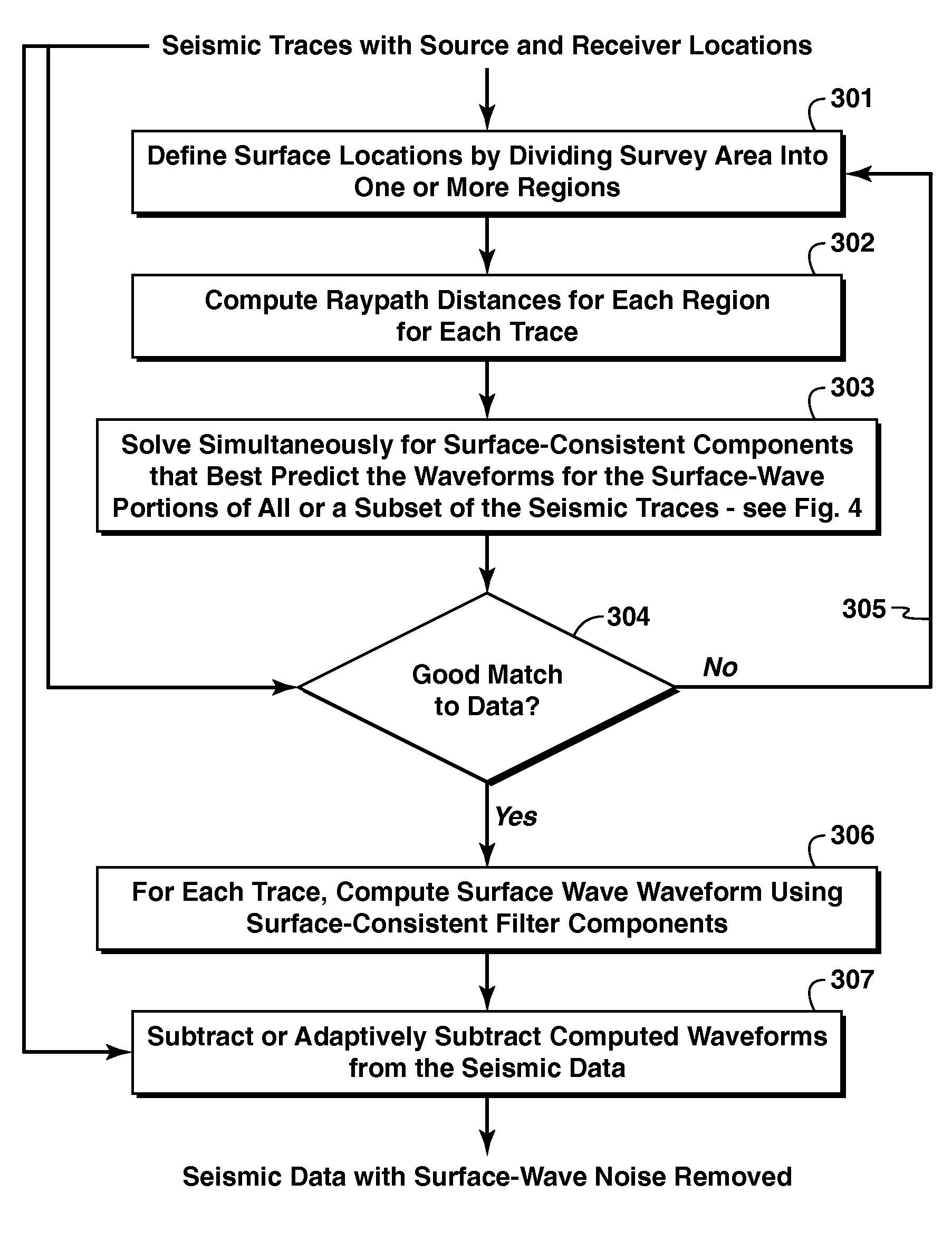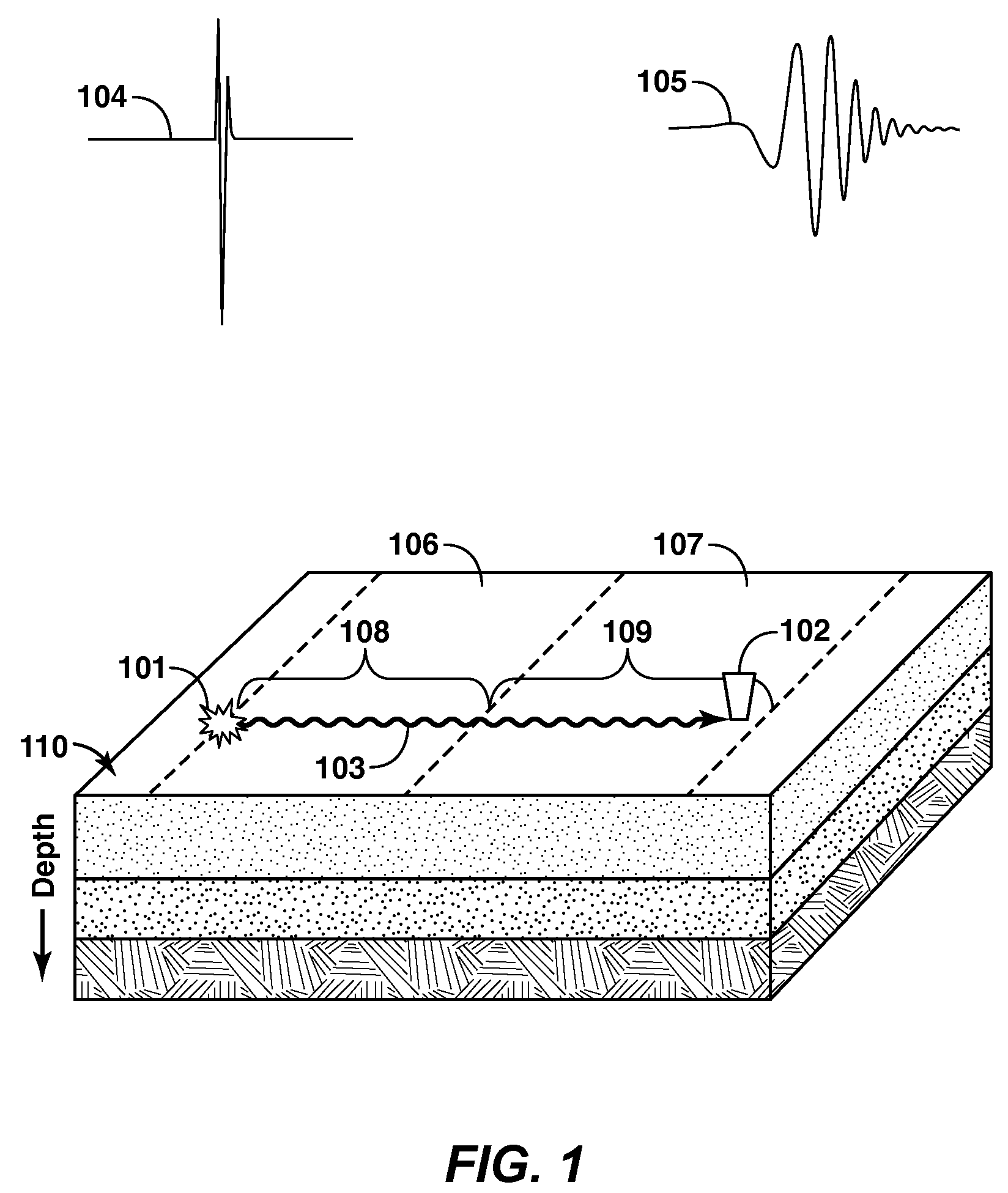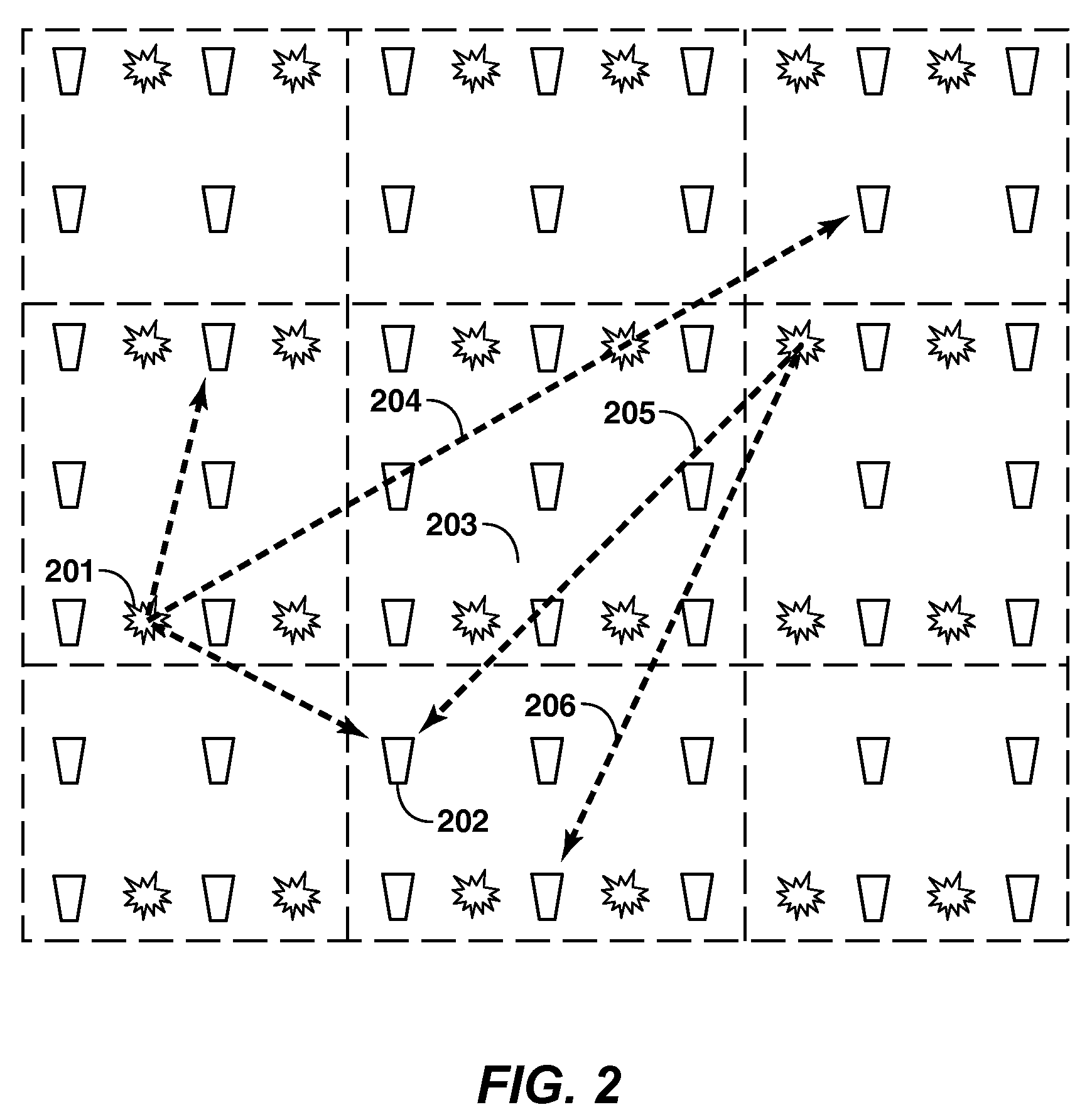Removal of surface-wave noise in seismic data
a seismic data and surface wave noise technology, applied in seismology, instruments, borehole/well accessories, etc., can solve the problems of limiting the ability to use seismic data for determining, affecting the ability to use seismic data for assessing the hydrocarbon potential of prospective reservoirs, and limiting the ability to optimize the well placement for extraction of hydrocarbons
- Summary
- Abstract
- Description
- Claims
- Application Information
AI Technical Summary
Problems solved by technology
Method used
Image
Examples
examples
[0088]A couple of examples of the estimation of ground-roll waveforms are shown here. These are examples for computer simulated data using a full 3D viscoelastic wave-equation solution for flat layers. The simulation was performed with a 20-Hz Ricker source wavelet. Because the model is of flat layers, there is no lateral variation in soil types, so there is only one region. Also, there are no receiver coupling variations. In these simple examples, the parameterization reduces to two components: the source and propagation terms for each mode.
[0089]The first example is a single 5-m thin layer over a half space. There is only one surface-wave mode, which is dispersive, as shown in FIG. 6 for four source to receiver distances (offset) ranging from 500 m (61) to 2,000 m (62) in uniform increments of 500 m. These represent a few traces from the seismic data input for step 301. The outputs of the model optimization step 303 are shown in FIGS. 7A-D. These include the source partition ampli...
PUM
 Login to View More
Login to View More Abstract
Description
Claims
Application Information
 Login to View More
Login to View More - R&D
- Intellectual Property
- Life Sciences
- Materials
- Tech Scout
- Unparalleled Data Quality
- Higher Quality Content
- 60% Fewer Hallucinations
Browse by: Latest US Patents, China's latest patents, Technical Efficacy Thesaurus, Application Domain, Technology Topic, Popular Technical Reports.
© 2025 PatSnap. All rights reserved.Legal|Privacy policy|Modern Slavery Act Transparency Statement|Sitemap|About US| Contact US: help@patsnap.com



